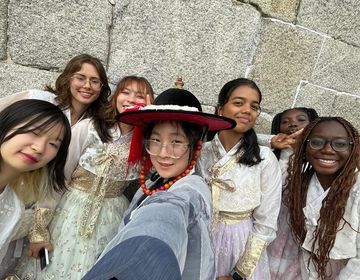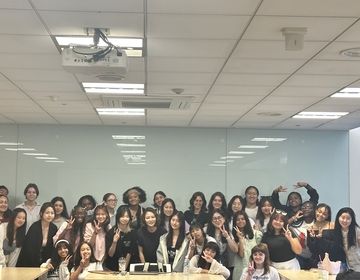K-pop in Context Reflexive Essay: Lukas M.
The genre of Korean popular music, known for its generally simplistic arrangements and melodies, emphasis on visuals, and extreme trainee systems can be credited to the expansive and complex history of South Korea, and the Korean Kingdom/Empire more generally. The kingdom/empire of Korea has gone through many difficult periods in its history which have all been directly linked to the popular music of those specific times. Traditionally, Korean music was very different from what we are used to today. The styles of Pansori and Minyo, along with various other non-vocal forms of traditional music, would often be included in very long performances, some even spanning up to eight hours as they told the stories of the relationships as told by the Buddhist belief system. However, as time went on and recording technology was made, Korean music now had to adjust to the recording limits that were only 3 to 4 minutes in length. This meant that Western music, which had the opportunity to adjust to these limitations prior, was now far more accessible and thus generally more accessed by the Korean populace. Then as Japanese Imperialism of Korea became a reality, and remained a reality for some time, Korean protest music began to emerge as civil unrest began to settle in towards the Japanese. Due to the fact that there was now direct contact with American and Japanese culture, the music of these countries also began to grow in popularity. These foreign popular songs are often said to have been the first forms of Trot music, one of the closer relatives to Kpop. Due to the presence of Western troops in Korea and their demand for entertainment, western style music was forced upon people and rapidly began to form a new sub-genre of popular music in the same style but in Korean. The presence of troops also meant that there was an audience that was willing to pay to be entertained, which formed these large companies which scouted the prettiest female singers which would be popular with the troops. Finally as the political situation in Korea began to calm down, popular music began to simply change with the introduction of new technologies, styles of recordings, changes in taste, etc. This remained true until the late 1990’s when Korea fell pray to the Asian Financial crisis, which was one of the best things that could have happened to Korean Entertainment at the time. This loss of economic stability allowed for people to take entertainment jobs more seriously, for people to look away from expensive Japanese entertainment to something cheaper, and eventually allowed the large Corporations that held all of the Companies as their own, and to relinquish ownership of companies that were smaller and mainly centered in Entertainment. This allowed for the popularity of Korean popular culture to rise significantly due to the increased demand. Korean pop has many characteristics that are used to describe it: minimalistic, aesthetically pleasing, attractive, shallow, etc. Although all of these things are often attributed to the industry's drive of quantity over quality (which is often a false claim altogether), all of these characteristics can be directly traced back to a specific point in history as the cause. Prior to the Kpop in Context course, I too held many of the common misconceptions about Kpop as truth. However after learning the general history of South Korea, and seeing a connection to outside sources of music it became very obvious that Kpop has become what it is now purposefully. Korean pop is not a musical style that simply exists due to a stroke of luck and dumb chance, it is a style of music formed from the very history that has made its origin country what it is today.
Related Posts
Kimchi Making, Hanbok, and Markets, Oh My!
What a whirlwind the last few days have been here for our Seoul Global Navigators! Students here have really hit the ground running and immersed themselves right into Korean community... keep reading
CIEE's Got Talent
What a group of talented students! Our Kpop Immersion group learned how to dance to "How Sweet" by New Jeans by the well-known dancer Hexxy. They did well trying to... keep reading
Music, Make-up, and more!
Hello from Week 2 of Session 1 in Seoul! The students started off this week with their K-pop class where they learned even more about the history of music in... keep reading



